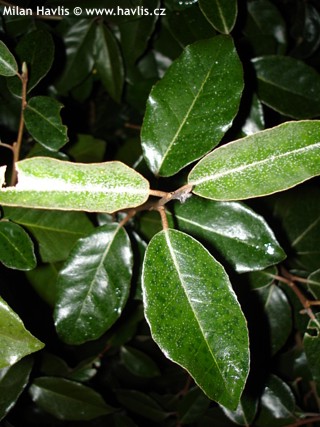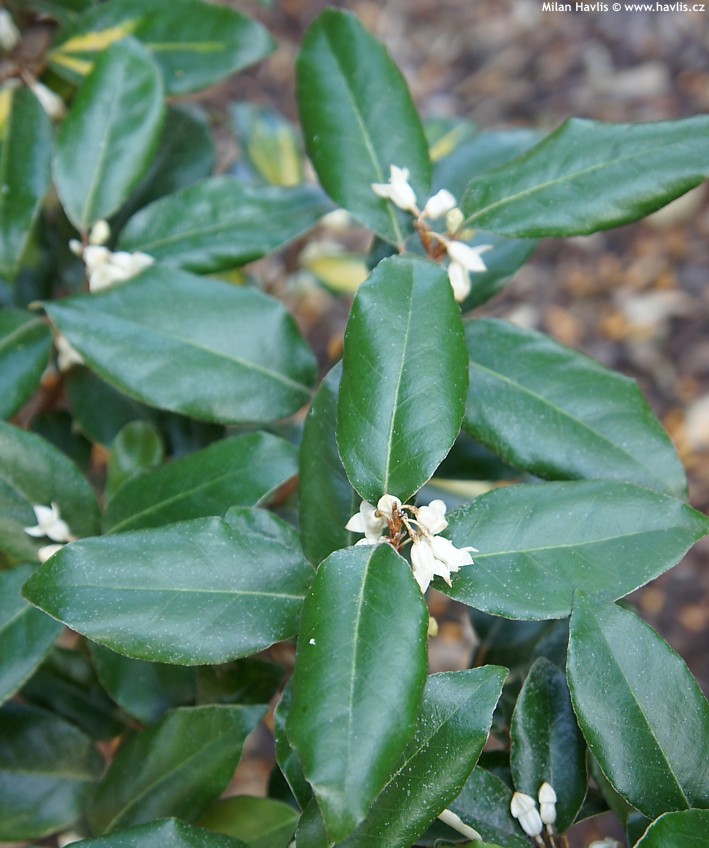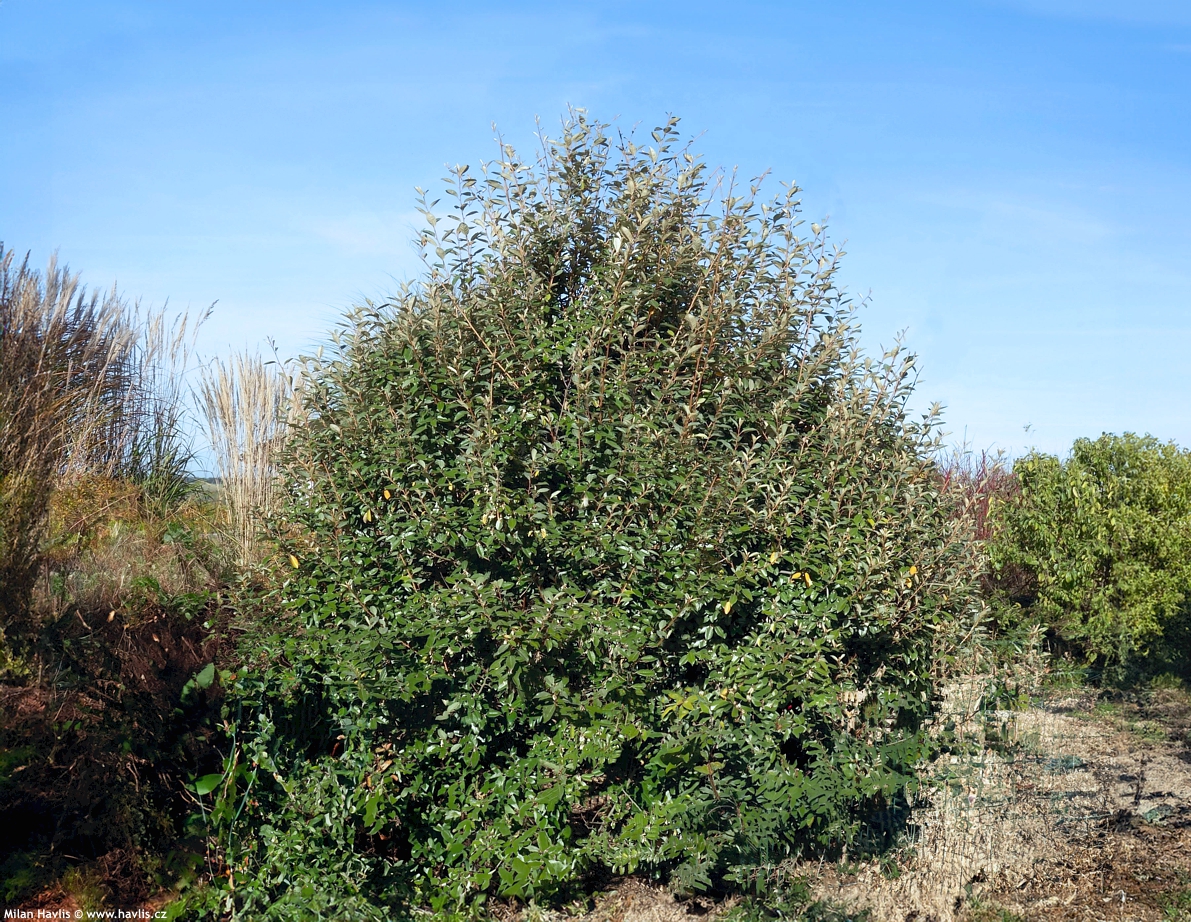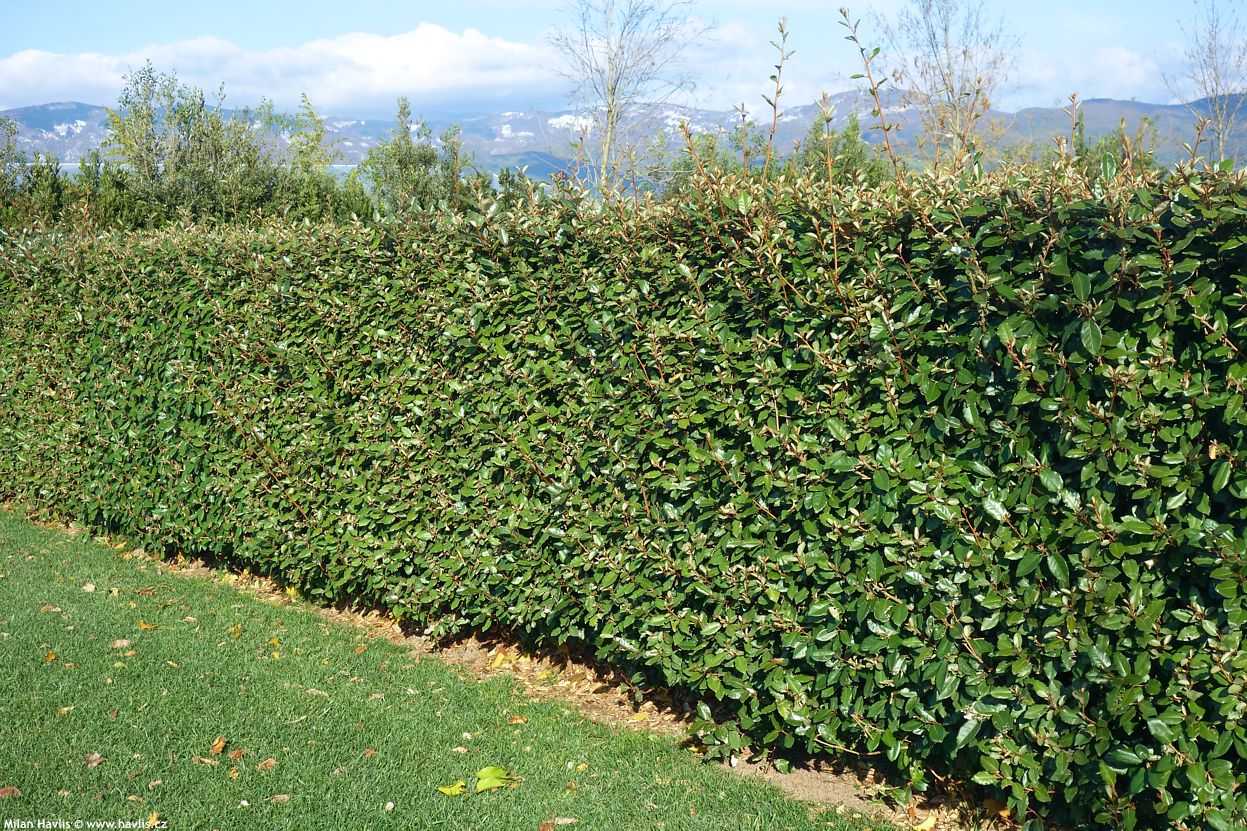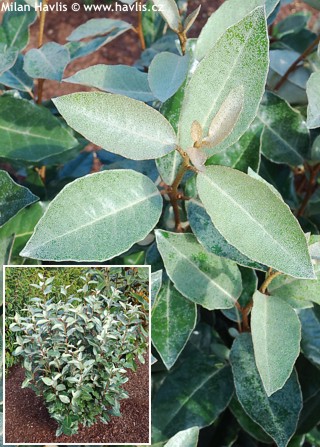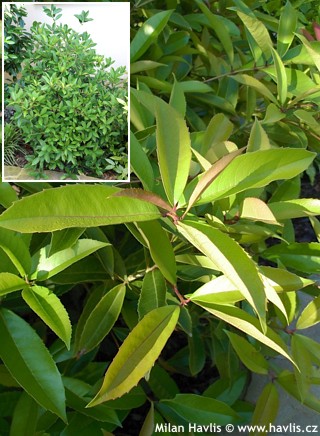Elaeagnus x ebbingei evergreen silverthorn
size/type
medium-sized shrub,taller shrub
usual height
2-4m
usual width
1-3m
leaves
evergreen broadleaf
colour of leaves
flowers
insignificant or non-blooming
colour of flowers
blooming time
September-October
location
full to partial sun
soil type
any (acidic to alkaline)
soil moisture requirements
evenly moist (dislikes drought)
USDA zone (lowest)
7 (down to -23°C)
winter protection
for zone 5+6

for zone 7

categorized
Description of the plant:
Evergreen silverthorn is a natural hybrid of e. macrophylla with large, evergreen, rather rounded leaves and vigorously growing e. pungens with narrower foliage and thorns. It is sometimes called Russian olive which is not correct as this name is already used for its deciduous sister e. angustifolia. It is described to have been discovered by a Dutch horticulturist Simon Doorenbos (1891-1980) who named it after another Dutch botanist J.W.E. Ebbinge in 1929. However, many years later it was pointed out that a Swiss botanist Camille Servettaz (1870-1947) found this mutation, too, and named it elaeagnus x submacrophylla already in 1909. In spite of that, the whole horticultural world still sticks to e. x ebbingei and we do, too, if you don’t mind.Apart from the foliage this plant is also interesting for its almost invisible flowers. They are tiny and appear from late summer to early autumn and are hard to see unless you look up close. But you can definitely smell them. They have a lovely, sweet fragrance, especially in the evening. They are followed by fruit in spring. 1,5cm long, oval fruit is deep red and taste like dark cherries. It is best to let them ripen well which is when it begins to fall. The plant can hold the fruit only if the winter is mild.
Silverthorn is a fast and vigorous grower. You can prune it almost any time from spring till autumn. It is soil adaptable but needs mulching in our climate to protect surface roots from heavy frost. We suggest planting it in winter shade in colder regions. Even after severe frosts it re-sprouts from healthy wood and makes long new branches. It will not live in boggy and wet conditions. Hardy to min. -20°C (USDA zone 6b), should the temperature drop lower protect it with white woven for maximum of 2 weeks. In frost-free periods provide extra watering if the ground is not frozen.
Last update 19-02-2010
QUICK PRICE OVERVIEW
CURRENTLY SOLD OUT












